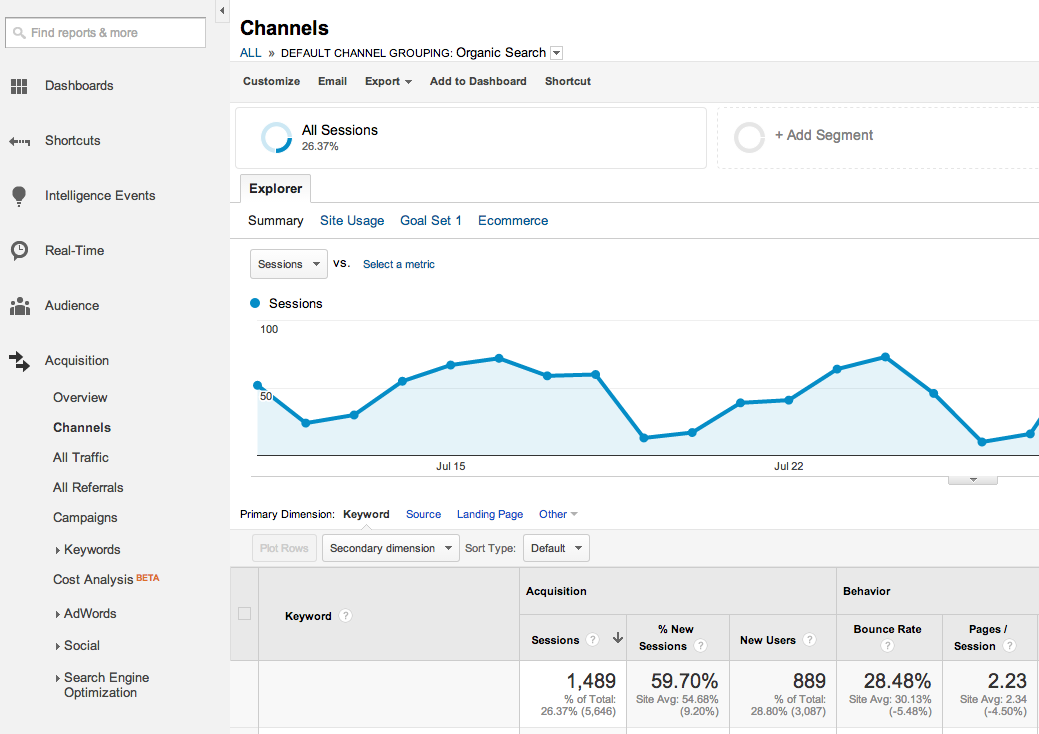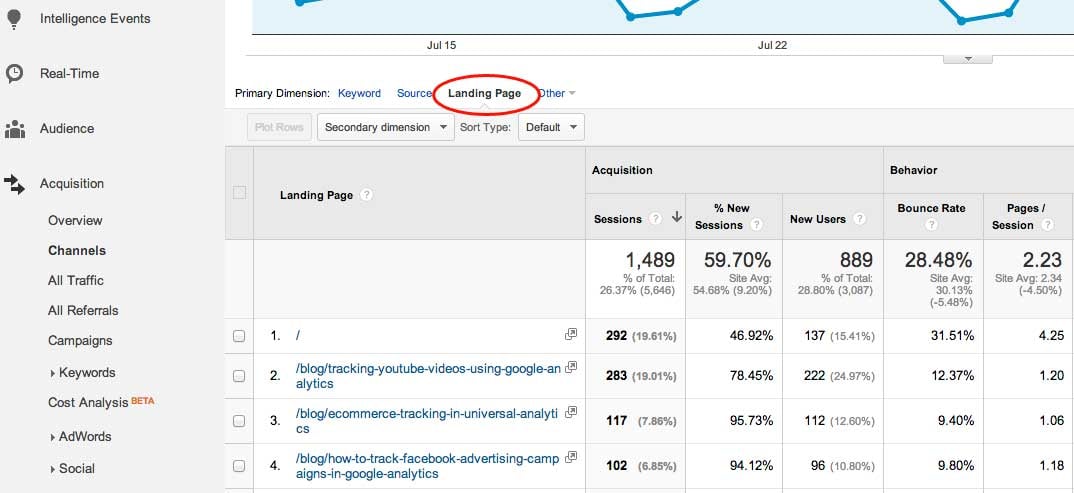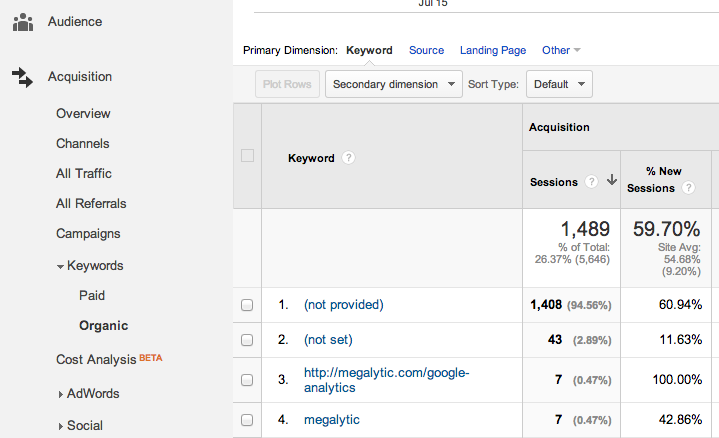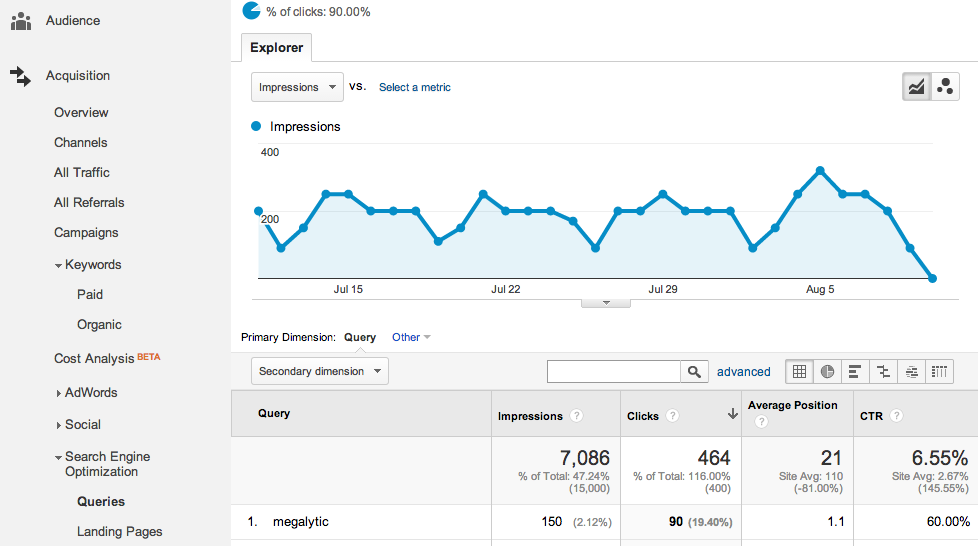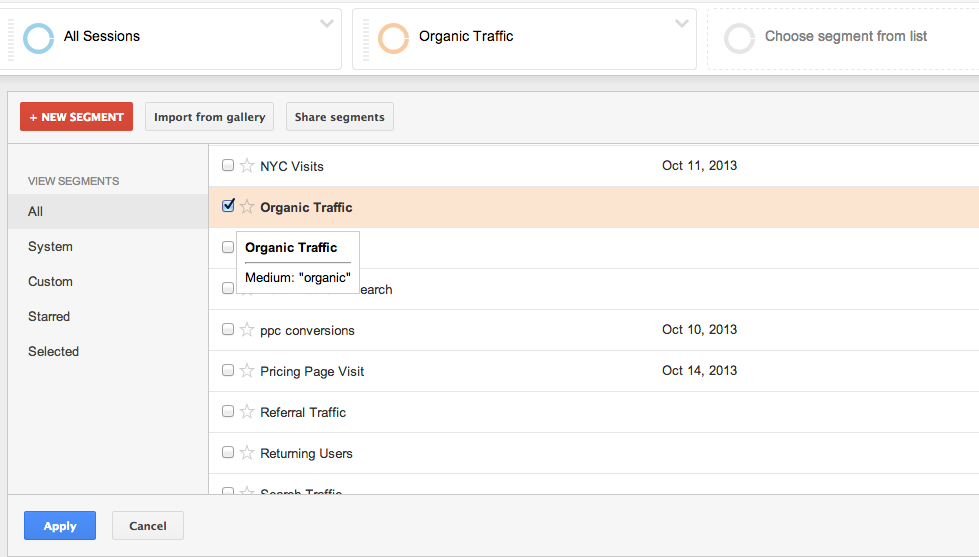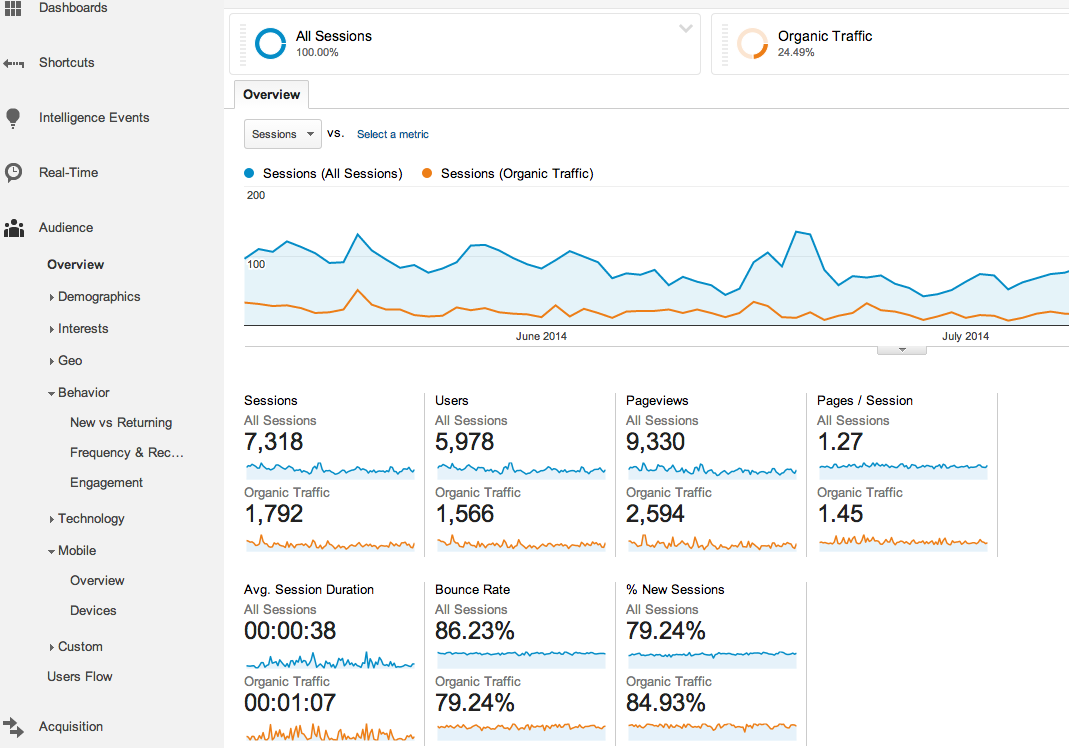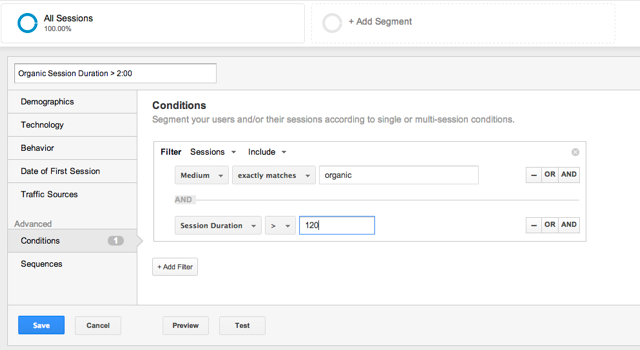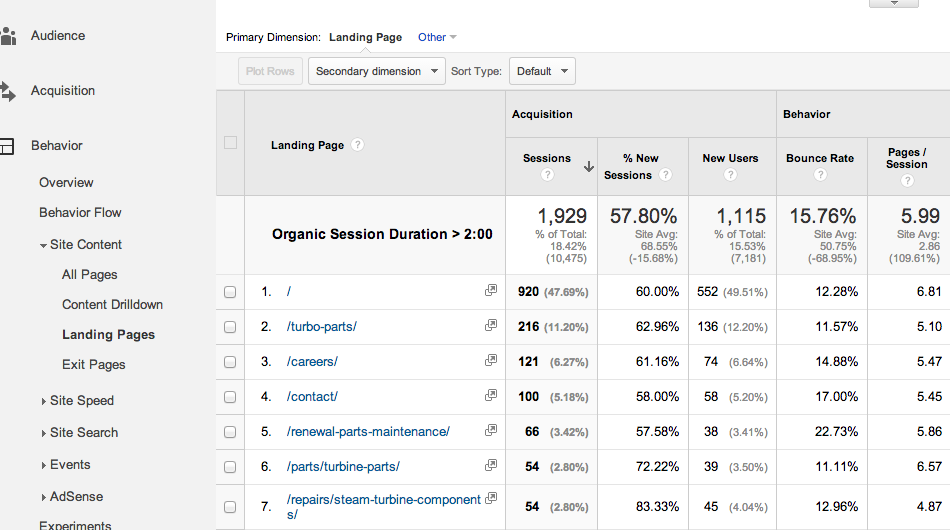
Organic Channel Report
To see a quick snapshot of your organic traffic, you can go to Acquisition > Channels and select Organic Search in the list of channels that appear. Here, you’ll see a list of keywords searchers have used to find your site (unfortunately, the data is rather limited. We’ll discuss this in the next section.), as well as a number of helpful high-level stats to help you understand how many users are arriving via organic search and how well they’re engaging with your content.
From this report, you can flag if a large percentage of organic users is bouncing off the site or spending less time there than you’d like to see. You can then delve deeper to identify where you can make improvements.
To look further in this report, we’ll select “Landing Page” under “Primary Dimension” to look specifically at the pages where people are entering the site from organic search. From here, we can see that users are less likely to bounce when reading blog articles. However, they’re also looking at fewer pages per session than users who arrive via the home page, who are more likely to include existing customers. A takeaway here could be to improve the flow of the site or to create special calls to action to get blog readers looking at more pages.
Identifying Organic Keywords
Identifying the words and phrases users are actually searching is key to understanding their thought process when researching your product or service. As marketers, we could once see these keywords easily via the Organic Keyword report (Acquisition > Organic > Keywords) within Google Analytics. However, things aren’t so easy anymore.
In a move to protect the privacy of users in 2011, Google began withholding keyword data from searches via the secure version of their site, replacing the data with (not provided). While this was initially presented as affecting only searches from logged-in users, eventually the use of secure search grew to encompass all Google searches.
The result? The end of organic keyword data from Google. Note the example below where (not provided) accounts for about 95 percent of keywords!
[To learn more about Google’s not provided move, read this article.]
As a savvy marketer, there are ways to combat this loss of data. One workaround is to link Webmaster Tools with your Analytics account. If you haven’t done so yet, follow these instructions.
Once Webmaster Tools is linked, you can see keyword data by going to Acquisition > Search Engine Optimization > Queries. You’ll then see impressions, clicks, average position and clickthrough rate for Google queries where your site appeared.
Unfortunately, this report does not show you the full range of data available in the main Keyword report, such as bounce rate and other engagement stats, but it will at least provide a better idea of the keywords leading people to find your site. Note that Webmaster Tools data only goes back three months, so you’ll want to export reports periodically to save historical data. Or, you can use a tool like Megalytic to save the Webmaster Tools history for you.
When you review your keywords, you can dig further to get practical insight from what you see. You can search for your brand name to get an idea of what percent of searches include your brand vs. general searches, where people are not aware of your brand name.
In addition, examine how people are actually searching for your products or services to develop ideas for building out content on your site. For example, do they have questions you can answer or are they coming to you with problems you can solve? Maybe your website copy promotes “residential pest control” but you see people searching phrases like “get rid of carpenter ants.” This may be a sign you should add content to your site specifically about removing carpenter ants from your home, covering how to identify a carpenter ant problem, how to treat it and the steps to take.
Finally, look at average rankings for keywords to see where you’re positioned for key terms. While rankings shouldn’t dominate your organic search strategy, as they can vary for every user, they still provide a picture of how well you’re appearing in search results. Be sure to watch for long-tail keywords, phrases with several words that may show low volume but also prove highly relevant to your brand.
Creating Organic Segments
Segments allow you to filter the traffic of any report by your desired parameters, giving you a powerful way to look further at organic sessions. Let’s start by applying the Organic Traffic segment to the Audience Overview, allowing us to see how engagement for organic sessions compares to the site as a whole. This is a built-in segment that you do not need to create – you can just apply it to your report.
First, click the “plus” right above the graph to open the Segments section. Scroll to select the Organic Traffic segment. Click the checkbox and then Apply. Leaving the All Sessions segment in place, you can compare organic stats to general stats for the site. For this particular site, you can see that organic users spend almost 30 seconds more than users in general, showing that these organic users are likely a more valuable audience who are taking more time to read content (and that’s what you want!).
Beyond using the default Organic Traffic segment, custom segments allow you to hone in further for more precise user sets on your site. For example, you can create a segment for visits from organic users who spent over two minutes on your site to see where those people are going and where they’re coming from.
Once you’ve clicked “Add Segment,” select “New Segment.” Next, in the box that appears, select “Conditions” under “Advanced” in the left bar. Filter so Medium matches Organic and Session Duration > 120 (time is measured in seconds). Name your segment and save it to apply to your reporting view. You will now see stats specifically filtered for sessions lasting over over two minutes on your site.
Several analytics reports will provide helpful data on your most engaged organic users with this segment applied. For example, looking at Landing Pages (Behavior > Site Content > Landing Pages) will allow you to see where your most engaged organic users are arriving on your site. You then might decide to promote those pages more heavily or improve content on pages that are seeing a lot of general visits but not many from this segment.
Conclusion
While we may no longer be able to rely on vast keyword data from Google (thanks, (not provided)), Google Analytics still offers a number of ways to investigate your organic users and understand their behavior on your site. Segments allow you to use all the standard reports to drill in to the specific behavior of organic visitors. Take some time to get comfortable with the many ways available to look at your organic users and discover data that will help you improve your site for visitors from this valuable traffic source.
